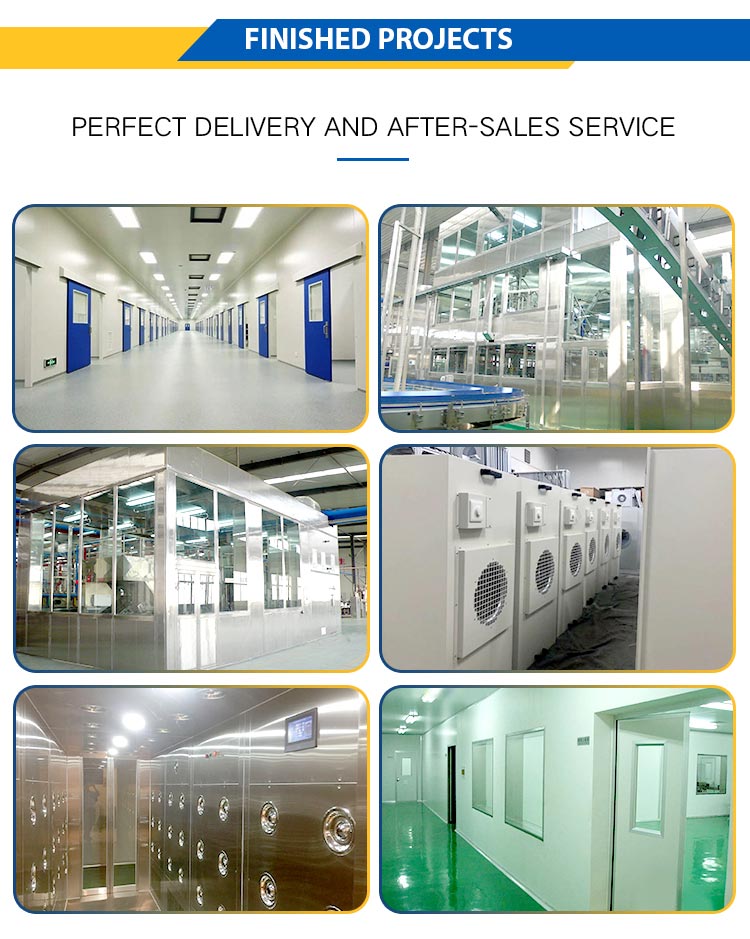Clean room testing standards:
One, dust-free clean room basic knowledge
Dust-free clean room refers to a specially designed dust-free clean room that eliminates particles, bacteria and other pollutants in the air within a certain space range, and controls the indoor temperature, cleanliness, indoor pressure, airflow speed and airflow distribution, noise and vibration, lighting and static electricity within a certain demand range.

Two, the principle of dust-free clean room.
Clean room is the use of HEPA, air purification equipment, the dust collection rate of 99.97~99.99995%, so the air filtered by this filter can be said to be very clean. However, in addition to people, there are machines and other sources of dust in the clean room. Once the dust diffuses, it is impossible to maintain clean space, so air flow must be used to discharge the dust quickly out of the room.
Three, dust-free clean room in the three dust.
Dust-free clean room has three principles: dust, dust, dust production. As one of the buffer channels into the clean room, the air shower is one of the purification equipment to control the dust. It can limit the pollution problems brought by the employees in and out of the clean room. The electronic interlock of the two doors of the air shower room can also play the role of the air lock chamber to prevent external pollution and unpurified air from entering the dust-free clean area to achieve the clean production environment required by the production workshop.
Four, dust-free clean room * the main role is to control the products (such as silicon chips, etc.) in contact with the atmosphere of clean days and temperature and humidity, so that the products can be produced and manufactured in a good environmental space, this space we call dust-free clean room. According to international practice, dust-free purification level is mainly based on the number of particles per cubic meter of air with a diameter greater than the partition standard. That is to say, the so-called dust-free is not 100% dust-free, but controlled in a very small amount of units. Of course, the particles in line with the standard of dust in this standard are very small compared with our common dust, but for optical structure, even the dust will have a very large negative impact, so in the production of optical structure products, dust-free is an inevitable requirement.
Five, each cubic meter will be less than 0.5 micron particle size of the number of fine dust under 3500, to reach the international dust-free standard class A. Currently applied in chip level production and processing of dust-free standards for dust requirements higher than A, such A high standard is mainly used in some higher chip production. The amount of fine dust is strictly limited to 1,000 particles per cubic meter, which is known in the industry as level 1K.
Asepsis room after disinfection, before asepsis test and in the process of operation, it is necessary to check the number of bacteria in the air, in order to judge whether the asepsis room has reached the specified cleanliness, there are often two determination methods of sedimentation bacteria and plankton bacteria. Their standards are described as follows:
1. Sedimentation bacteria detection method and standard: take 3 nutritional AGAR plates into aseptic operation room in aseptic way, and put one on the left, middle and right of the table in the operation area; Open the plate cover, expose the plate in the air for 30min, cover the plate, incubate it at 36℃ 1℃ for 48h, take it out and check, the number of bacteria growing on the three plates is less than 1 on average.
2. Detection method and standard of plankton bacteria: a special sampler, flowmeter and timer were used to operate in strict accordance with the requirements of the instrument instructions and check regularly. After all sampling, the petri dish was placed at 36℃ for 1℃ culture for 48h and taken out for inspection, the average number of plankton bacteria should not exceed 5 /m3. Each batch of medium should be selected 3 petri dishes for control culture. Aseptic operating table or ultra-clean table should also be regularly tested for suspended particles, which should reach level 100 (generally with dust particle counter), and replace the filter if necessary according to the aseptic condition.